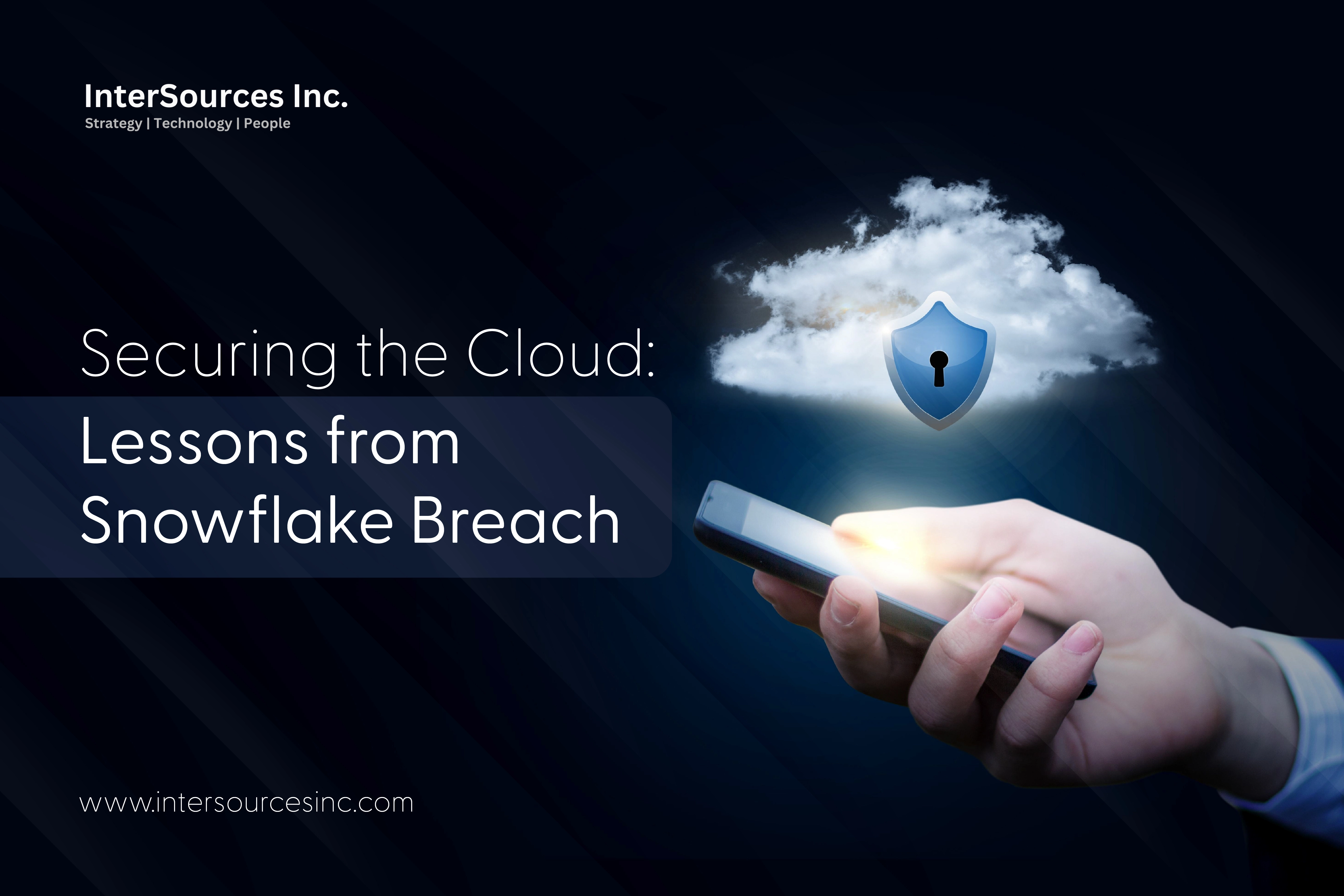
Securing the Cloud: Lessons Learned from the Snowflake Data Breach
In today's increasingly digital world, securing cloud-based platforms is more crucial than ever. The recent Snowflake data breach serves as a stark reminder of the vulnerabilities even top-tier companies face. As cloud adoption continues to soar, with 94% of enterprises leveraging cloud services in 2024, the stakes have never been higher.In this blog, we'll dissect the Snowflake data breach, unearth the industry lessons learned, and equip you with the knowledge to fortify your own cloud fortress. So, buckle up and get ready to transform from a cloud novice to a security champion!
The Snowflake Breach: What Happened?
Snowflake's the darling of cloud data warehousing, letting companies store and analyze massive datasets with ease. But even the shiniest cloud services aren't immune to breaches
Breach Breakdown: In June, attackers likely gained access through a compromised sales engineer's machine. Malware might have been the culprit, stealing login credentials. The good news? No core Snowflake product flaws were found.
What Happened: Hackers likely infiltrated a sales engineer's machine, possibly through malware. This single compromised device might have been the key.
What Was Swiped? The information accessed is still under investigation, but it likely involved prospect and sales data. While not social security numbers, it's a reminder that any breach is serious.
Lessons Learned: Securing Your Cloud Data
Let's face it, the clouds are amazing. Scalability, flexibility, cost-efficiency – it's a tech dream come true. But with great power comes great responsibility, especially when it comes to securing your precious data. Just this year, a whopping61% of organizations reported cloud security incidents, proving breaches are far from a distant threat.
Now, before you panic and unplug your server (please don't!), let's talk about lessons learned. Here's the thing - many breaches stem from preventable issues.
Case Study: When Weaknesses Become Exploits
The Snowflake scare’s culprit? A misconfigured cloud storage bucket. This highlights a crucial point: cloud security requires constant vigilance. A single oversight can leave your data wide open. Weak access controls are another common theme. Imagine giving everyone a skeleton key to your house – that's essentially what happens when access isn't tightly controlled.
And then there's the ever-evolving threat of supply chain attacks. Just because you trust a cloud provider, doesn't mean their partners are invincible. Remember, security is a chain, and only the strongest link matters.
Why Best Practices Matter More Than Ever
So, how do we build a stronger chain? Here are some essential cloud security best practices that can make all the difference:
Think of this as your cloud bouncer. Enforce strong passwords, multi-factor authentication (MFA), and the principle of least privilege. Only grant access to the data and resources users absolutely need.
Imagine your data wrapped in an unbreakable code. Encryption protects your information at rest (stored) and in transit (moving). This way, even if unauthorized access occurs, the data remains unreadable.
Keeping a close eye on activity logs is crucial for detecting suspicious behavior. Did someone access a file at an unusual time? A well-configured monitoring system can raise red flags and help you investigate potential threats.
Just like your phone, cloud systems need regular updates to fix security holes. Schedule vulnerability scans and apply patches promptly to stay ahead of evolving threats.
Shared Responsibility: Partners in Data Protection
Here's the thing about cloud security: it's a team effort. Most cloud providers follow a "shared responsibility model" where they secure the underlying infrastructure, while you're responsible for securing your data and applications running on that infrastructure.
Understanding this division of responsibility is key. Cloud providers offer a vast array of security tools and features – leverage them! But don't rely solely on their security blanket. Be proactive in implementing best practices to create a robust defense for your valuable cloud data.
Advanced Cloud Security Measures
Breaches are expensive (IBM says the average cost in 2023 was a whopping $4.35 million!), so let's talk about some advanced measures that can seriously up your cloud security game.
First up, Zero Trust Architecture (ZTA). Forget perimeter defenses, ZTA assumes everyone and everything is a potential threat. It verifies access constantly, making it much harder for unauthorized users to sneak in. Think of it like a high-security building - everyone needs to keep proving their identity, no matter who they are.
Next, we have Data Loss Prevention (DLP). It’s like a digital bouncer for your sensitive data. DLP solutions scan what's going in and out of the cloud, making sure nothing confidential gets out the door accidentally (like an employee attaching a customer list to a personal email).
Conclusion
Don't let the Snowflake breach chill your cloud ambitions! While breaches happen, you can significantly reduce your risk with a strong security posture. Intersources Inc. can help you navigate the ever-changing cloud security landscape. Our experts can fortify your cloud defenses with robust access controls, encryption, and advanced threat detection solutions.
Contact Intersources today and breathe easy knowing your cloud data is in the best hands.
